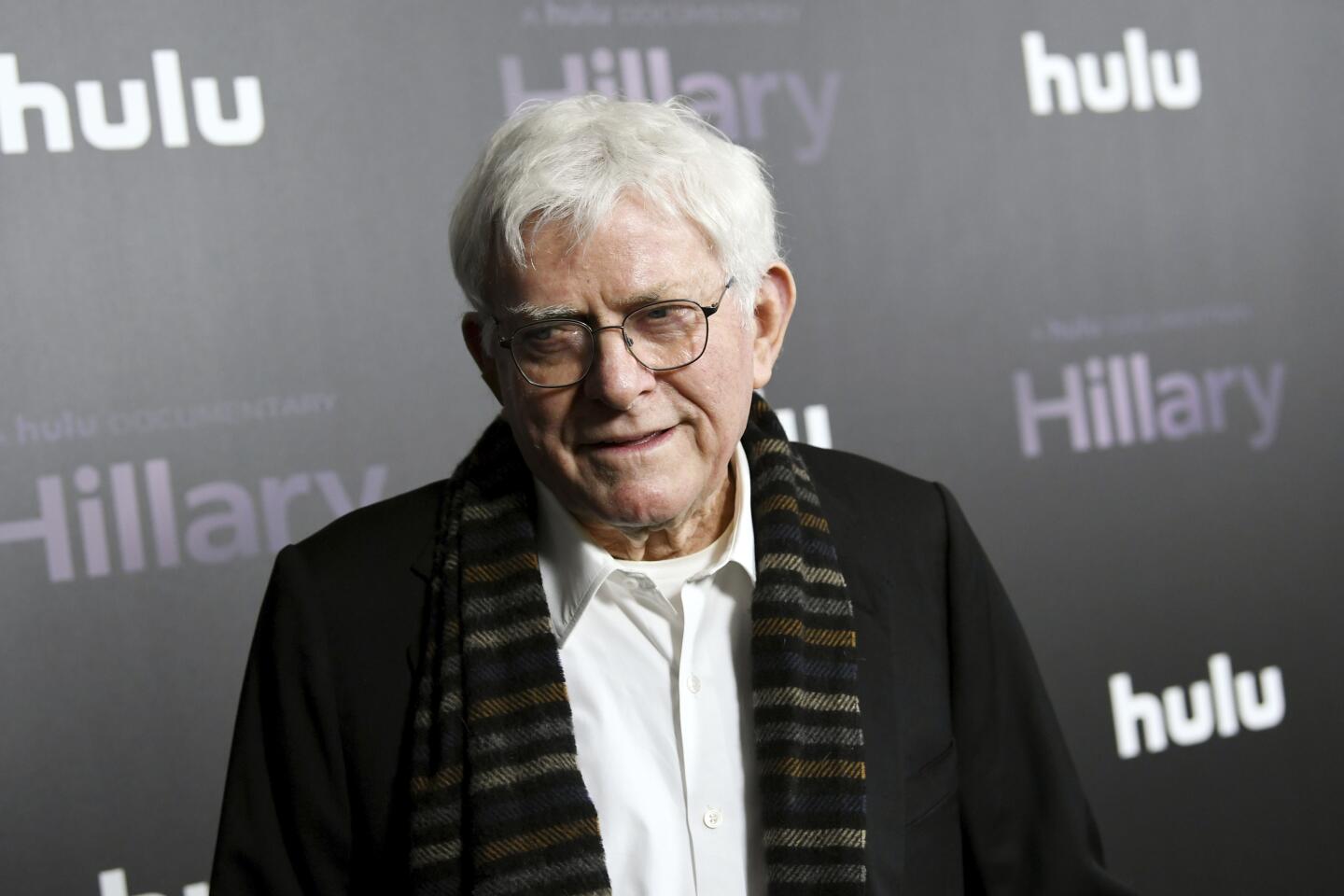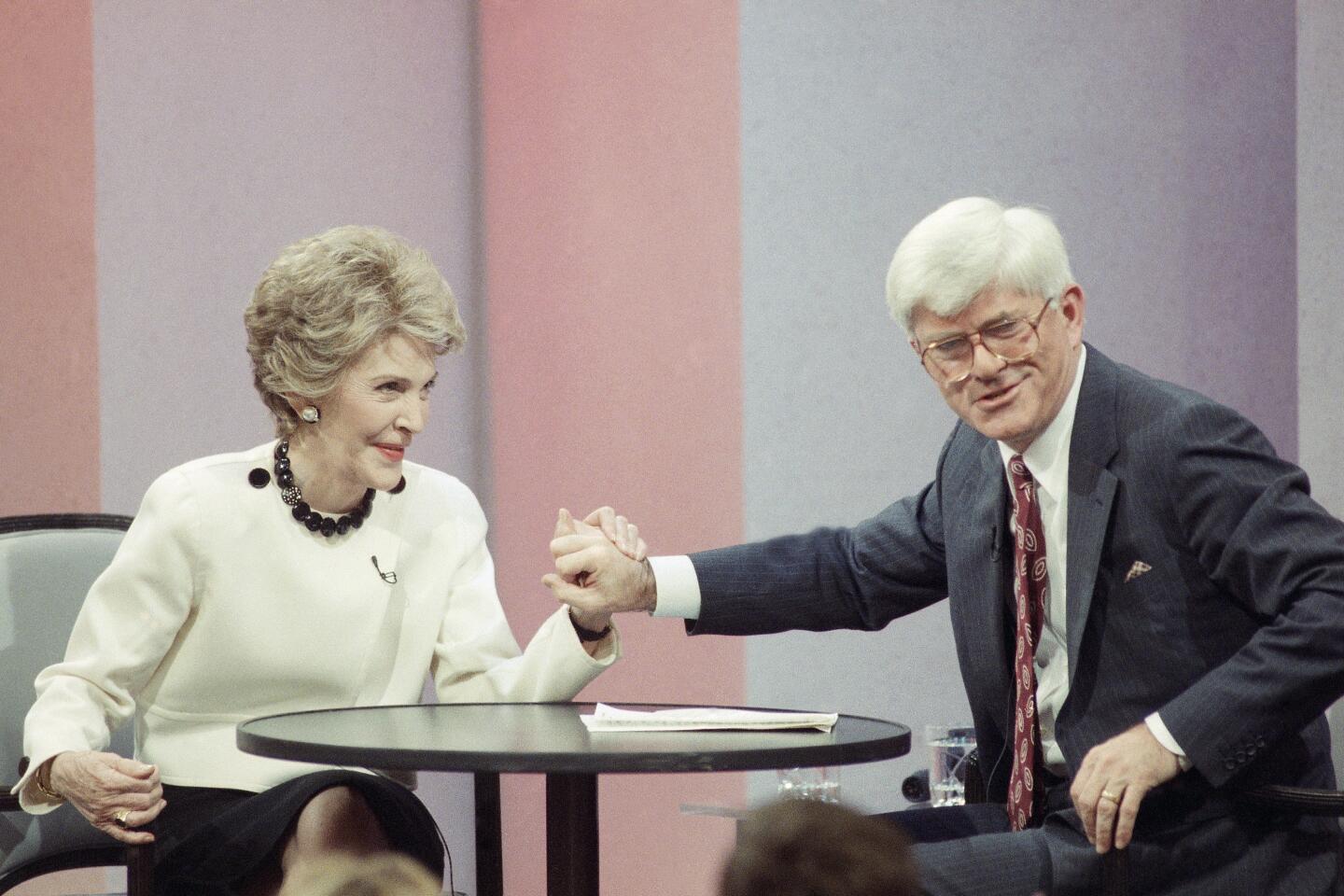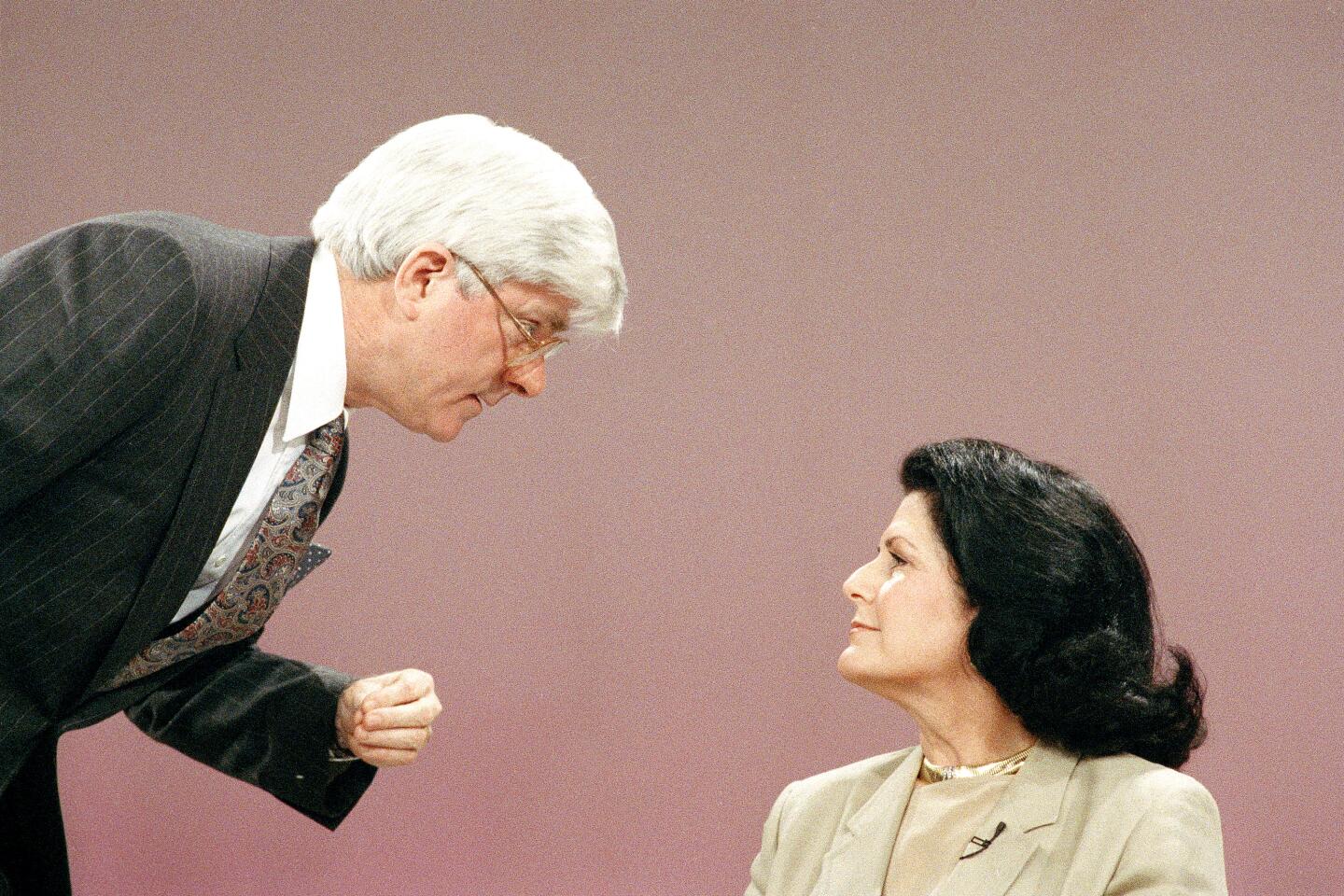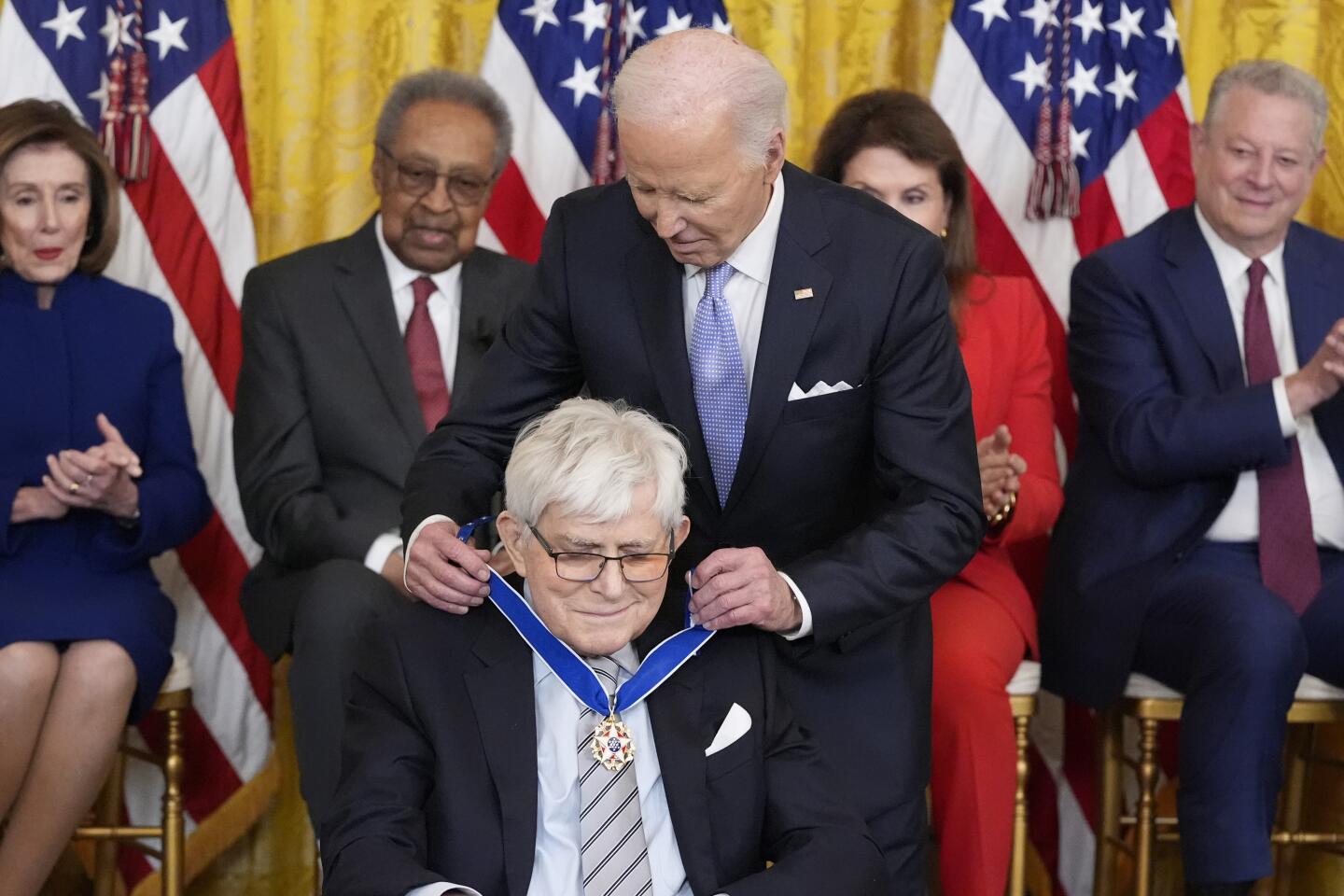Phil Donahue, the pioneering host of long-running daytime talk show ‘Donahue,’ dies at 88
- Share via
Phil Donahue earned praise for his “insatiably curious and accepting” nature and his ability to hold a “mirror up to America” when he received the Medal of Freedom from President Biden in May.
The groundbreaking daytime talk show host reinvented the relationship between TV hosts and their audiences, opening the medium up to genuine conversations about race, religion, reproductive healthcare and scores of other hot topics over more than 6,000 episodes.
“He saw every guest as worthy of interest and worked to build understanding, bringing us to see each other not as enemies but as fellow Americans,” a White House announcer said of Donahue in May.
Donahue died Sunday “peacefully after a long illness,” his family said in a statement to The Times. He was 88. NBC’s “Today,” where he was a contributor, broke the news of the host’s death.
Television: After more than 28 years and nearly 7,000 shows, the pioneer in daytime talk taped his last ‘Donahue’ on Thursday.
The Emmy Award and Peabody Award winner was known for engaging the audience in the talk-show format, interacting with in-studio fans or callers just as he did with the notable and eclectic list of guests on the show, including anti-apartheid leader Nelson Mandela, musical star Dolly Parton and groundbreaking comedian Richard Pryor. Donahue, “the king of daytime talk,” was the first host to incorporate such audience engagement — typically during a full hour with a single guest — into a talk series.
“Just one guest per show? No band?” he remembered being routinely asked in his 1979 memoir, “Donahue: My Own Story.”
The format set “The Phil Donahue Show” apart from other interview shows of the 1960s and made it a trendsetter in daytime TV, where it was particularly popular with female audiences. Donahue originated a format that would influence other TV hosts, Oprah Winfrey among them.
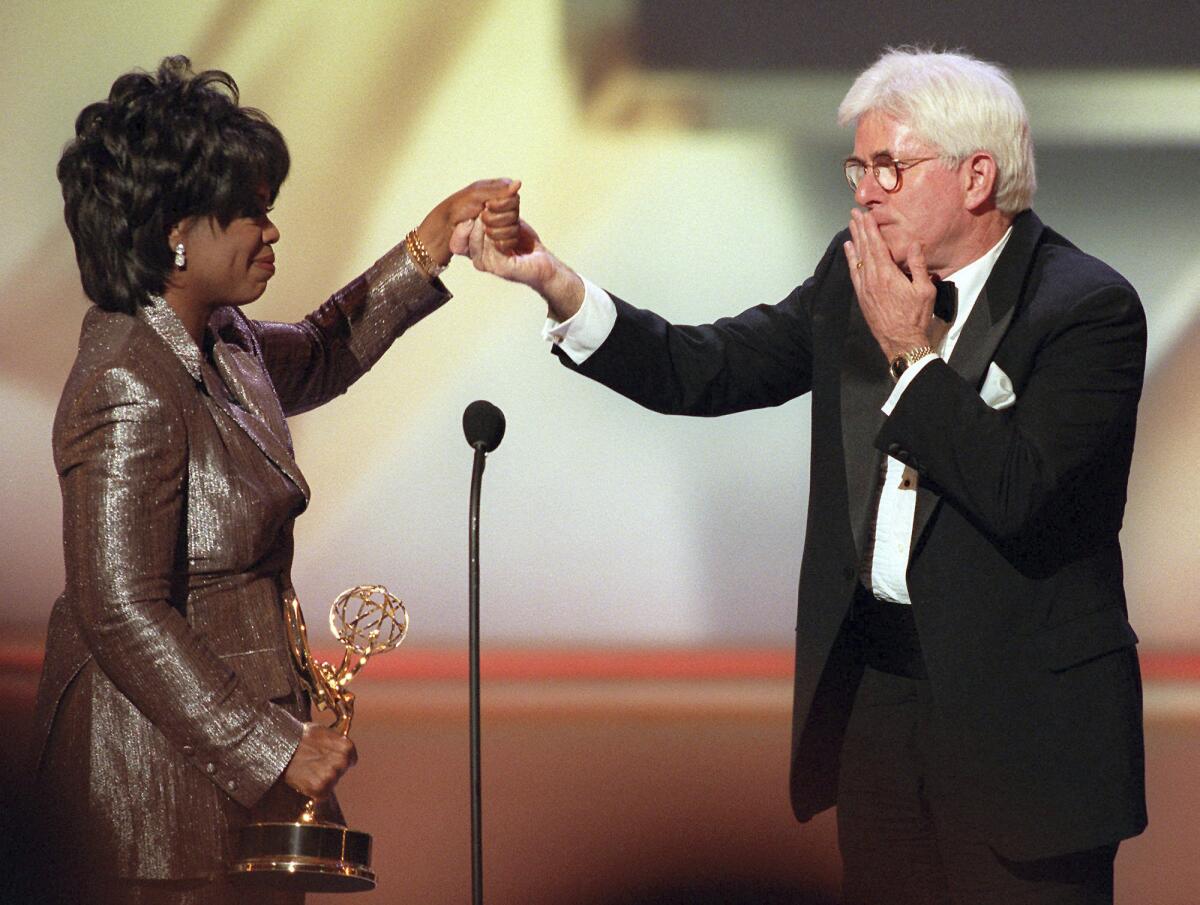
In a tribute shared on social media Monday, Winfrey reflected on Donahue’s legacy, stating simply: “There wouldn’t have been an Oprah Show without Phil Donahue.” She said he was the “first to prove that daytime talk and women watching should be taken seriously.”
She added: “He was a pioneer. I’m glad I got to thank him for it. Rest in peace Phil.”
“The Phil Donahue Show,” later renamed “Donahue,” launched in Dayton, Ohio, in 1967. Donahue’s willingness to explore the hot-button social issues of the day emerged immediately, when he featured atheist Madalyn Murray O’Hair as his first guest. Donahue would go on to discuss race and Islam with Muhammad Ali and feminism with Gloria Steinem. While appearances with high-profile figures made for memorable moments, “Donahue” also thrived on conversations that amplified the voices of its viewers.
Notably, Donahue provided female audiences a platform to directly address health professionals about contraceptives and sex education.
Television: The father of the daytime talk show delivered information, not titillation. Competition and fickle audiences caused ratings to drop.
“What I’m most proud of is that we involved the audience more than anybody else in the game,” he told Winfrey in a 2002 interview. “People who owned the airwaves got to actually use them in this wild thing called democracy. Hooray for us.”
The show would run nearly 30 years, through 1996. By then, as The Times reported, the landscape of daytime TV had radically changed, with a cacophony of competitors who turned Donahue’s once-daring openness about personal issues into “I Slept With My Mother’s Boyfriend.”
Once the undisputed ruler of daytime and a nine-time Emmy Award winner, Donahue dropped to No. 13 in the ratings during his last season on the air. After he lost a key New York outlet and KNBC-TV Channel 4 in Los Angeles announced it would not be renewing the show, he decided to quit rather than be canceled.
“When I walk out that door at the end of the last show, I have no professional commitments to anybody or any company,” Donahue said in a May 1996 interview with The Times shortly before his last show aired. “Everyone around here is looking at me like I’m some kind of science project — ’How am I going to respond to not working every day?’ ... I don’t want to sit in a rocker for the rest of my life.”
The former TV legend’s passion for the ‘Body of War’ project is fueled by anger over Iraq and admiration for the film’s subject, Tomas Young.
He said at the time that he was interested in documentaries: “I’d like to be able to take the time to research and develop a story that reveals something about America.” Years later, he turned that interest into a reality.
In 2004, Donahue toured Washington’s Walter Reed Army Medical Center, where he met Tomas Young, a young Kansan who enlisted in the Army not long after 9/11 to fight the war on terrorism. An insurgent’s bullet penetrated Young’s spine, leaving him paralyzed from the chest down; he became one of more than 13,000 American soldiers and Marines to return home badly wounded, many permanently disabled.
Donahue resolved to tell the story of Young’s struggle to recover his life and enlisted director Ellen Spiro, a documentarian who had made films for HBO and PBS. Along the way, their subject became involved in the growing antiwar movement, which reinforced the filmmakers’ decision to intersperse Young’s personal story with footage of the congressional votes and hearings that sent hundreds of thousands of young American men and women to war in Iraq.
The film, “Body of War,” premiered on the festival circuit in Toronto in 2007 to standing ovations and nearly universal critical acclaim.
“‘Body of War’ makes no bones about its activism,” then-Times film critic Carina Chocano wrote in 2008. “Then again, like [other Iraq war documentaries], it’s the willingness to contextualize events and apply reason to them that makes it and others so valuable.”
Documentary examines Tomas Young, who was paralyzed fighting in Iraq.
Phillip John Donahue was born Dec. 21, 1935, to a middle-class Irish Catholic family in Cleveland. They moved to Centerville, Ohio, when Donahue was a child, where he lived across the street from Erma Bombeck, the future humorist and syndicated columnist.
Donahue was in the first graduating class of St. Edward High School, a Catholic all-boys preparatory school in Lakewood, Ohio, in 1953 and graduated from the University of Notre Dame in Indiana with a degree in business administration in 1957. He later rebelled against and left the Catholic Church, though he poignantly recalled in his book that “a little piece” of his faith would always be with him.
After a series of early jobs in radio and TV, Donahue was invited to move a radio talk show to Dayton’s WLWD television station in 1967. The show moved in 1974 to Chicago, where it stayed for years, then ended its run in 1996 in New York, where Donahue was living with his wife, actor Marlo Thomas, whom he had married in 1980.
He met the “That Girl” star when she appeared on his show in 1977. He later said it was love at first sight, and they did a poor job of hiding it on the air.
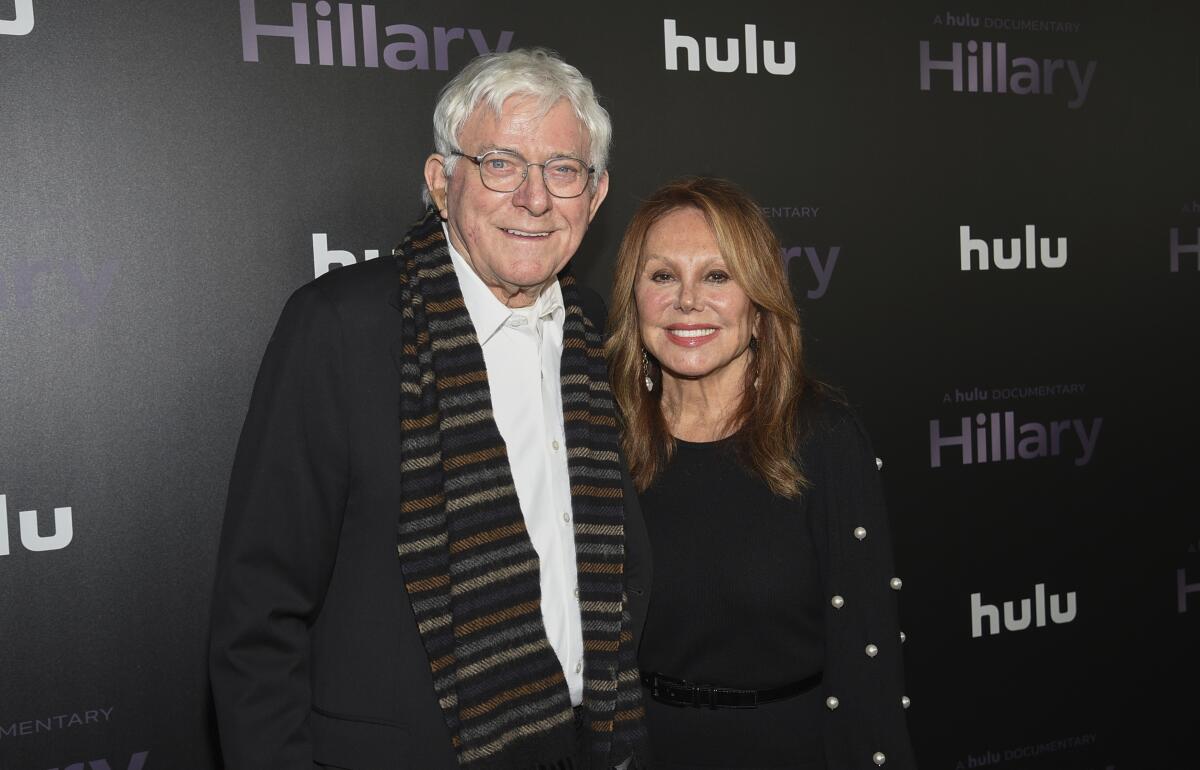
“You are really fascinating,” Donahue told Thomas, grasping her hand.
“You are wonderful,” Thomas said back. “You are loving and generous, and you like women and it’s a pleasure, and whoever the woman in your life is, is very lucky.”
Donahue had previously been married to college sweetheart Marge Cooney, with whom he had five children. They divorced in 1975.
Donahue received the Medal of Freedom along with 18 others in May. The accolade cited his work as one of the most influential television programs of its time. Among the host’s other accolades are a Peabody Award and membership in the Television Academy Hall of Fame.
In addition to Thomas, Donahue is survived by four children, Mary Rose, Kevin, Michael and Danny Donahue; a sister; and two grandchildren, according to the Washington Post. His son James died in 2014.
The family requests donations be made to St. Jude Children’s Research Hospital or the Phil Donahue/Notre Dame Scholarship Fund.
The Associated Press contributed to this report.
More to Read
Start your day right
Sign up for Essential California for the L.A. Times biggest news, features and recommendations in your inbox six days a week.
You may occasionally receive promotional content from the Los Angeles Times.
